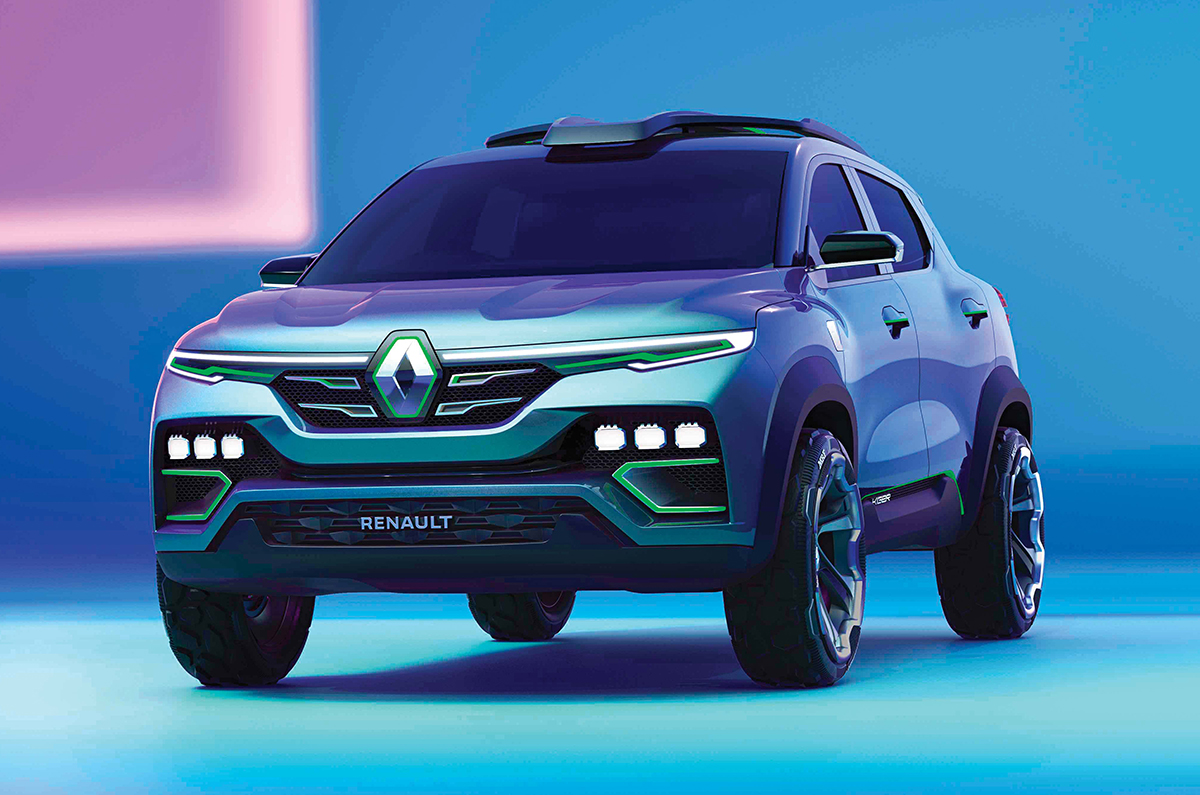Can you really complain about being served a meal by the personal butler of the ethereal Maharani Gayatri Devi? Or, for instance, about being able to see the entire Milky Way while laying in the sand dunes in the dead of the night? I could go on with such examples, but if there’s one thing you really need to know about life-altering experiences in Rajasthan, it’s simply that you will never run out of them. Comforted by this very thought, I cheerfully bid goodbye to three of my esteemed colleagues as they rose up from the ground in a very large basket, a bunch of propane burners shooting angry flames inches above their heads into a ginormous hot-air balloon. To give chase in an Audi Q8 was certainly no less spectacular a way to explore the outskirts of Jaipur and, in any case, I wasn’t quite in the market for a new propane-styled hairdo.
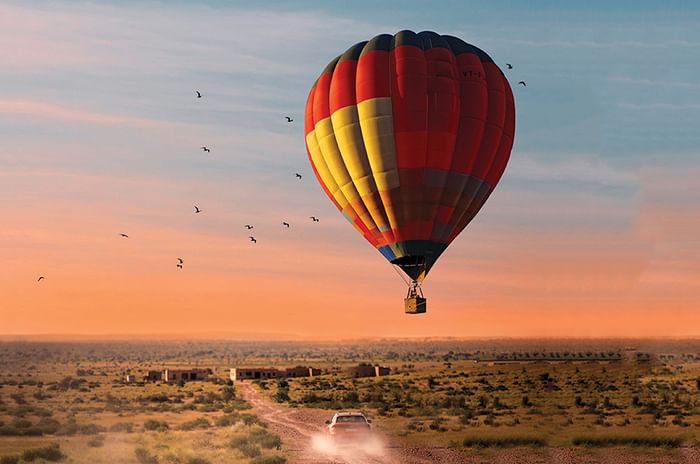
One final eruption jerked the colourful balloon high enough to be swept away by the sharp wind, while I stood mesmerised and reminded of the imagery on the covers of those Konica family albums I involuntarily inherited. It was time to get the shiny orange Q8 fired up and going, only nobody could tell me which way in particular. The Sky Waltz team, a group of hot-air ballooning experts, seemed to know better as they led the way in their pick-up truck. We rushed through tight rural alleys, slithered over sandy roads, putting the quattro in my Q8 to full use, and finally came to a halt, a full half-hour later, having even crossed a state highway in hot pursuit of the raging balloon. Collective accounts from my colleagues as we drove into Jaipur city seemed to indicate I had missed a very surreal experience, although, on balance, I still had a week of touring Rajasthan’s westernmost bits ahead of me. That’s hardly something one could complain about.
A Grand Affair
Adequately satisfied with the premise, I pulled into the Taj Jai Mahal Palace hotel in the heart of Jaipur, the state capital. The expected affair of grandeur and warmth ensued, something a week in Rajasthan gets you accustomed to, in addition to which I had also adopted a new diet regimen which, without giving too much away, involved eating copiously. This bode well for me, given that the sense of scale in Rajasthan is a bit off the charts. In other words, everything in Rajasthan is a long walk away, even just within your hotel room, which makes a raging appetite quite the prerequisite.
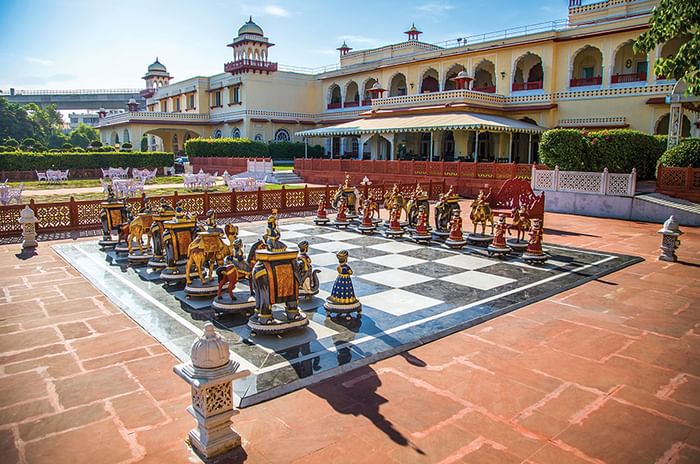
The Jai Mahal Palace verified this claim and just as I had laid down the last of my silverware over a late lunch, I received a dinner invitation from the Taj Rambagh Palace. Well, life is hard sometimes, but in the true spirit of travel journalism, I took it on the chin and walked menacingly across the lawns of the Jai Mahal in a hopeless attempt to wear it all off. When the realisation of my utter failure descended upon me, I got into the handsome Q8 and drove off. Being a capital city, Jaipur is delightfully organised (the roads are impeccable, for the most part) and despite its unmistakable urban fabric, it still is very much brimming with cultural flavour. Be it the vividly coloured, patterned sarees women in marketplaces don, or just the wild assortment of street food you can find just around any corner, Jaipur is a delightful socio-cultural kaleidoscope.
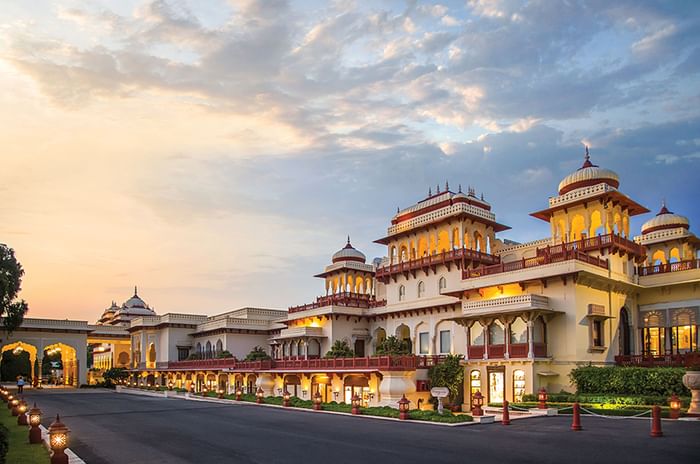
At Suvarna Mahal, the fine-dining restaurant within Rambagh Palace, I gobbled down a meal fit for a head of state at the very least (served by the aforementioned personal butler of Maharani Gayatri Devi, for whom no adjective will ever suffice and thus no attempt shall be made either) with immense restraint for fear of making a disastrous faux pas. For when you visit, be assured that no attempt is spared to make you feel most welcomed and at home, and this is certainly an experience you must indulge in. The drive back to the Jai Mahal Palace was dispensed with even sooner, the Q8’s TFSI motor breathing easy on Jaipur’s easy streets, and no sooner had its fantastic LED lights guided me into the palace gates than I had taken the elevator up to my room and hit the sack.

Fort Knocks
The melody of a flautist served as my alarm clock the following morning, in no way being an unpleasant start to the day. A heavy breakfast later (well!), I drove up to the nearby Hawa Mahal, undoubtedly the most recognisable of Rajasthan’s vibrant architectural marvels. To our good fortune, not only were we allowed to photograph the palace at length, we were even allowed to drive inside it! While the Hawa Mahal’s star attraction certainly is its iconic facade, the one with an incredible 953 windows, it is in no way less impressive on the inside. The labyrinthine innards of the palace are simply captivating and, in all honesty, you need to devote a few hours to it, at the very least. A short walk away is the Jantar Mantar (translates to ‘instrument of calculation’), one of four surviving equinoctial sundials in the country and home to many other bewildering devices, aptly qualifying it as a UNESCO World Heritage site.
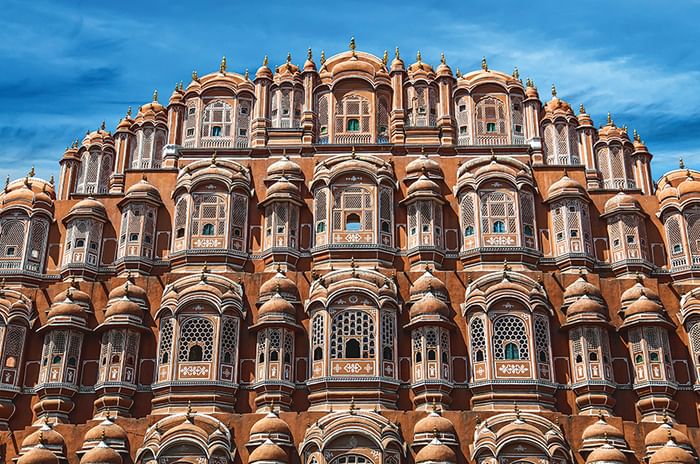
Unfortunately, I couldn’t spend a deserving amount of time here as my next halt, the staggering Amer fort, beckoned. The fort, sitting atop the Cheel ka Teela (Hill of Eagles, translated) and towering above the Maota Lake, is quite an uphill trek, but thankfully you can drive all the way up and even park in a sizeable lot along the fort’s cobbled approach road. Now, while Rajasthan has an endless inventory of forts and palaces, repetitiveness is hardly an issue. The Amer fort is certainly rewarding, as it leads you into its marvellous halls, the Diwan-e-Aam (hall of public audience), the Diwan-e-Khas (hall of private audience), the bedazzling Sheesh Mahal (palace of mirrors) and the brilliant Sukh Niwas, designed so as to provide a cool climate to occupants using no more than the winds blowing over a water cascade!
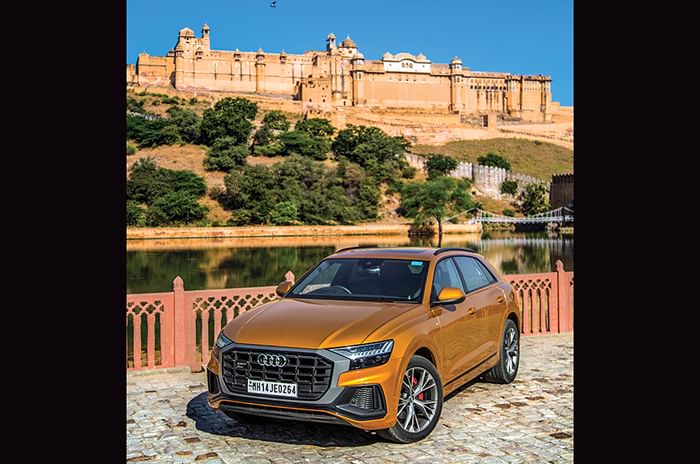
Exhausting Extravagance
While no two forts in Rajasthan are alike, all of them have a tendency to exhaust your limbs, and I was glad I had the Q8 to drive back into Jaipur. Its sporty dynamics make light work of the narrow, twisty roads, and the impeccable ride quality ensures you don’t necessarily need to slow down for broken patches of tarmac. This meant I could resume my culinary quest without much delay, this time aiming for the heart of the city to sample some delicious local fare. Well, I certainly got more than I had wished for, thanks to having taken the recommendation of heading to the Laxmi Misthan Bhandar, or just ‘LMB’ to locals. It brings me a tinge of shame to list out the sheer variety of desserts I helped myself to, so I shan’t, but let me say this – it was worth each of the several kilos I may have put on instantly and, perhaps, irreversibly. My last evening in Jaipur was mostly a culinary blur, and I was certain the overall experience would remain unmatched in the days that were to follow.
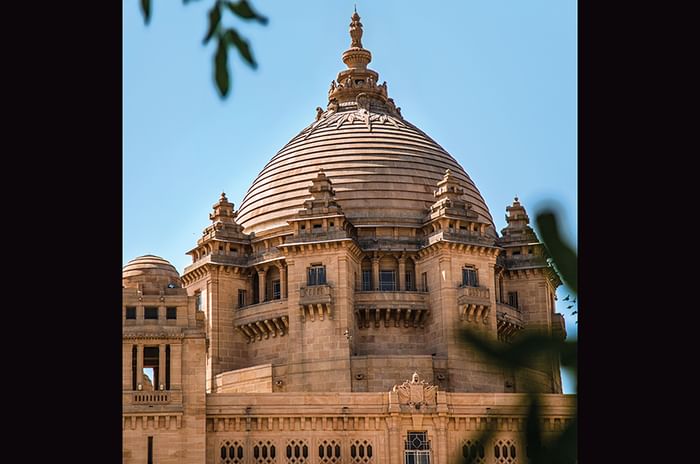
My prophecy couldn’t have been more wrong, as I almost staggered to a halt outside the imposing gates of the Umaid Bhawan Palace in Jodhpur the next evening. The drive had been a spectacular one, with the changing landscape offering an endless string of vistas, from villagers in resplendent traditional attire against calming lakes to stray camels idling away alongside the serpentine highway. But Umaid Bhawan was a thunderous punctuation to the day’s serenity. There is no adjective superlative enough to describe the magnificence of this other-worldly structure and certainly no photograph that can do justice to its scale and stance. Built over a period of 14 years and completed in 1943, the Umaid Bhawan Palace is home to the former royal family of Jodhpur and boasts 347 rooms in all. It is also a most curiously unique structure, built not unlike a Lego fortress, using massive interlocking blocks, rather than being held together by mortar. Honestly, and I mean no offence, the Umaid Bhawan Palace is absolutely outrageous, and while there is no documented evidence of this, I am pretty certain it can be spotted from outer space.
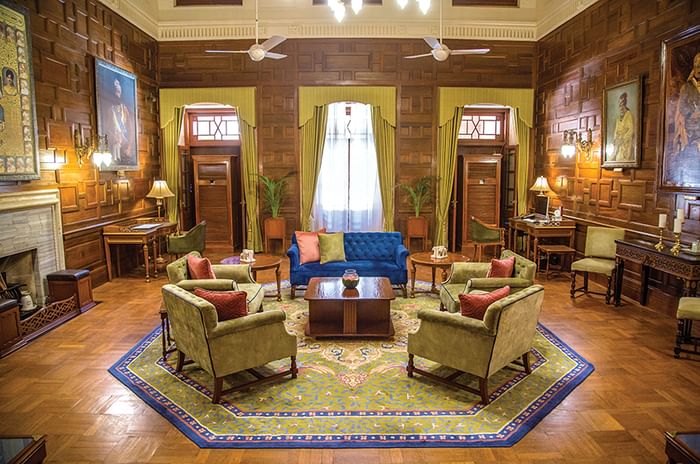
Certainly within the reach of only the most affluent, it’s the sort of place that makes you want to go on a bank-robbing spree (a Q8 will come in handy – just saying) just to be able to spend the good part of a week here. Having resisted a strong urge to do precise, quattro-controlled drifts over the palace’s spotless and ample driveway, I somehow gathered my wits and made my way in, only to be further assaulted by the overwhelming extravagance on display. The long walk to my room, past the glitzy hallway and the central dome, left me exasperated and I decided to stay firmly indoors for fear of getting lost and remaining so for the better part of the decade.
Feeling Blue
In stark contrast to the Umaid Bhawan Palace is most of the rest of Jodhpur, a charmingly dense town through which runs a labyrinth of tiny alleys, barely wide enough to accommodate a family hatchback. A parking spot wasn’t easy to find, so I left the Q8 and chose to walk down the narrow streets, taking in the old-world charm one step at a time. Shops selling colourful wares jostled for space and, avoiding skirmishes with errant motorcyclists, I stepped into the old town, to which Jodhpur owes its tag of the ‘blue city’. Pretty much every square inch of every household here is painted an invigorating blue and there’s nowhere you can point your camera without getting a mesmerising shot, as I duly discovered.
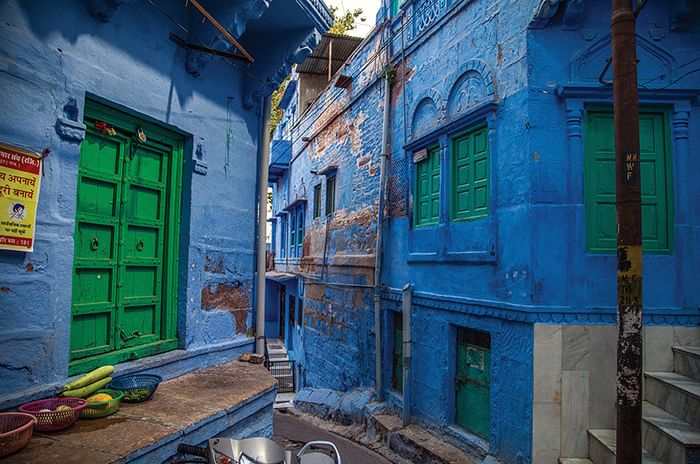
Emerging through the crammed yet oddly tranquil residential block, I was at the gates to the Mehrangarh Fort. Now, Mehrangarh, I must announce, is my absolute favourite of all the forts in Rajasthan for just how well it camouflages its gory history with an almost effeminate architectural appeal. There is a soulfulness to Mehrangarh that lies beyond its imposing facade and, quite unlike your typical fort, it is more a body of grace and elegance than of stoic brutality. Having had my breath taken away by Mehrangarh, I settled for a cold drink at the resident cafeteria before embarking on my final destination – the desert city of Jaisalmer.
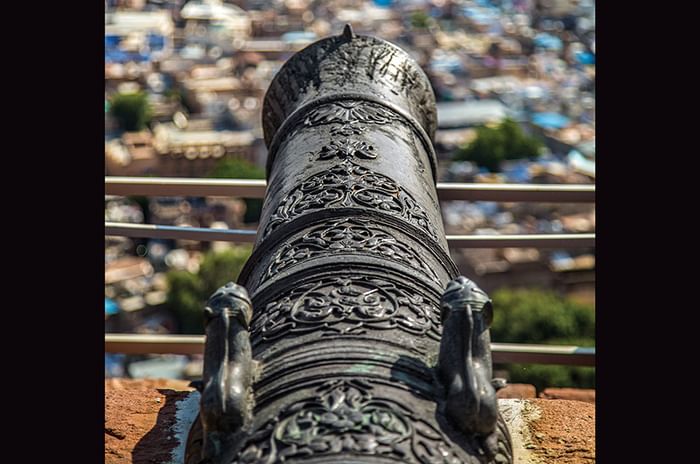
Sands Of Time
Jaisalmer, to the uninitiated, is the westernmost city in Rajasthan, enveloped by the immense Thar desert. The sands that caress this city have seen many a battle unfold, in all of which the valiant Indian armed forces have emerged victorious, and I realised there was no better place than Jaisalmer to underline what had been an incredible road trip. The drive into Jaisalmer had been a thrilling one, with the fantastic dune-skirting roads making for an involving experience, and the scenery changed most drastically, transitioning from a semi-rural setting to a consumingly barren panorama. I don’t think too many other places in the world can make you realise the scale of the planet we live on than the road leading to Jaisalmer. Thanks to the energetic Q8 being a willing accomplice and what are, undoubtedly, some of the finest driving roads in the country, the journey was nothing short of a sensory treat.
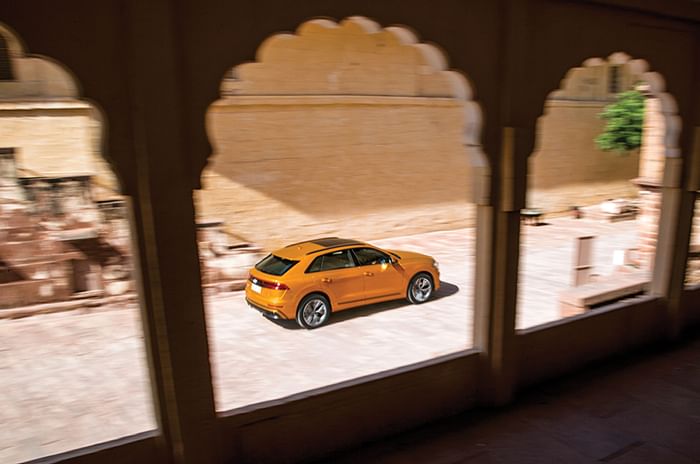
A visible departure from the typical bustle of elsewhere in Rajasthan, Jaisalmer is rich in its silence. With the most incredible of all the landscapes Rajasthan can present to you, it’s the perfect ‘reset’ button after the roller-coaster of extravagance the rest of the state bathes you in. With a fairly relaxed itinerary, I watched the sun rise in the backdrop of the Gadisar Lake, a somewhat compact and wonderful tourist attraction, which allows you the luxury of a pedal-boating experience, apart from being able to admire the rising sun through one of its many beautiful turrets. After a refreshing start to the day, I drove into the Jaisalmer Fort, popular for its status as the oldest ‘living fort’ in the world. Most incredibly, the fort is a surreal, perfectly self-sustained colony and is rather bustling with life; the sheer uniqueness of this setting almost overshadows the exasperating layout of the fort itself, and it’s certainly something to witness first-hand.
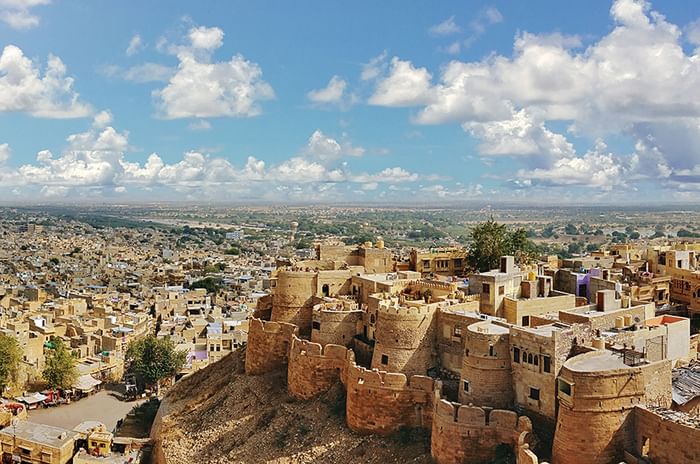
Nothing, however, can prepare you for what Jaisalmer is best known for – the dunes. Before I could let loose in the seemingly infinite sands, however, I decided to make an impromptu detour to Kuldhara, a town abandoned in the 19th century for reasons not entirely clear. A multitude of legends attribute the abandonment of this once prosperous town to everything from a dwindling water supply to persecution by an erstwhile official to even an earthquake, but you will almost certainly forget the unanswered question upon entering the town’s precinct. Having parted with a small fee (Rs 100) to enter through its archway, I drove the Q8 to the dead-end of its cobblestone street and disembarked, stunned by the silence and serenity of this supposedly haunted settlement.
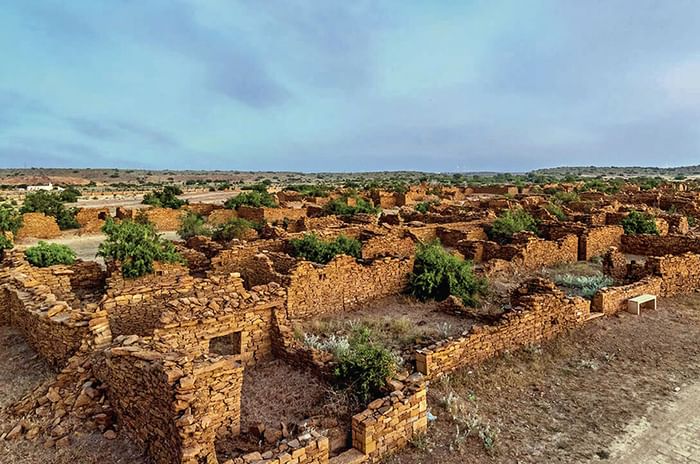
Kuldhara may be no more than a vast landscape of ruins today but it doesn’t quite conceal the civilisation that mysteriously eroded off its soil. That it was a perfectly well-planned township is effortlessly evident, which adds to curiosity around its Jenga-esque remnants. I found myself immediately drawn into the many stone-walled but roofless houses, where I amused myself thoroughly (though not derisively), imagining the functionings of a 13th century household. An unexpected thought coalesced shortly after, one I struggled to shake off for a long time. What I was looking at was undoubtedly an irreversible relic, but it was oddly also a potential reflection of the future. Perhaps our stories will be documented well enough for future generations to not be left dumbstruck. Then again, what do we really know?

Keen to derail my newfound train of thought, I decided it was best to finally hit the dunes, perhaps the most characteristic geographical feature of Rajasthan that had, thus far, remained elusive. A dear friend and the brainchild behind the outstanding Desert Glamping resort in the Sam Sand Dunes, Madan Lal Choudhary welcomed us into his private quarter of the desert, expertly guiding the Q8 all the way to the top of the highest crest we could see for miles. With the proven quattro system at hand, the Q8 impressed onlookers, camels included, with its deceptive mannerisms in the desert, something you’d typically expect of a bare-bones, crude automobile. What followed after the driving action ceased, was an evening of light-hearted revelry, soulful music performed by arguably the most talented traditional musicians you will ever witness, and the expected fare of delectable Rajasthani cuisine.
Well beyond midnight, we lay in the soft, cool sand under a pitch black sky, embedded into which were a thousand sparkling galaxies. The mystique of the infinite sky paired with the expanse of the desert serving as our viewing gallery was an experience even Rajasthan couldn’t outdo, I thought to myself. The weeks thus far had been an extravagant indulgence – all of which I was entirely undeserving of – and yet, here I was, overpowered by something as elemental as the open sky. I asked Madan, perched atop the bonnet of his dune-plugger a small distance away, on what he thought made Jaisalmer so magical. His answer, to me, underlined all of Rajasthan’s soul in its entirety. ‘Everything you have experienced so far can, to a large extent, be created, demolished and even rebuilt to exactly what it has always been. But the nature of Jaisalmer can neither be recreated nor destroyed’. With that desert rose as a lasting parting memory, my lucky streak with life-altering experiences came to a brief halt. Everything else, for the time to come, was going to feel like a load of hot air.













